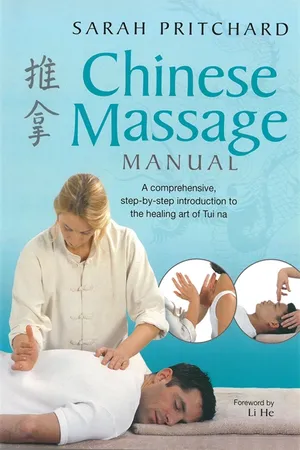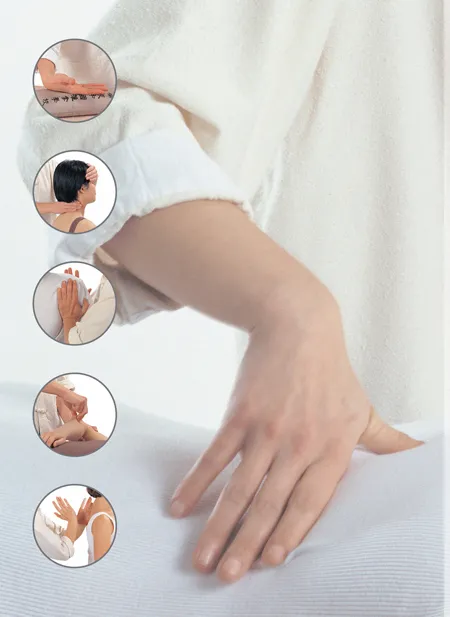
Chinese Massage Manual
A comprehensive, step-by-step introduction to the healing art of Tui na
- 144 pages
- English
- ePUB (mobile friendly)
- Available on iOS & Android
Chinese Massage Manual
A comprehensive, step-by-step introduction to the healing art of Tui na
About this book
This comprehensive, introductory book covers the essentials of Chinese massage (Tui na), including the fundamental principles of Chinese medicine, and the 20 basic massage techniques. It also includes treatment advice for 12 common ailments, so that the reader can practice what he or she has learnt to good effect. The book covers:
· Instruction on 20 specialized massage techniques
· How to locate over 50 points to treat specific problems
· How to combine massage with Qi Gong for maximum energy and wellbeing
· Step-by-step treatments for common colds, lower back pain, sciatica and more
· Clear photographs, diagrams and charts
The author provides key information in clear, easy to refer to tables and diagrams, making this also an excellent reference for students, and practitioners of related disciplines.
Frequently asked questions
- Essential is ideal for learners and professionals who enjoy exploring a wide range of subjects. Access the Essential Library with 800,000+ trusted titles and best-sellers across business, personal growth, and the humanities. Includes unlimited reading time and Standard Read Aloud voice.
- Complete: Perfect for advanced learners and researchers needing full, unrestricted access. Unlock 1.4M+ books across hundreds of subjects, including academic and specialized titles. The Complete Plan also includes advanced features like Premium Read Aloud and Research Assistant.
Please note we cannot support devices running on iOS 13 and Android 7 or earlier. Learn more about using the app.
Information



Table of contents
- Cover
- Half Title
- Of Related Interest
- Title Page
- Copyright
- Contents
- Foreword
- Introduction
- The history of Tui na
- Part 1 The Theory
- Part Two The Techniques
- Part Three Treating Common Ailments
- Conclusion
- Acknowledgements
- Resources and Further reading
- Index